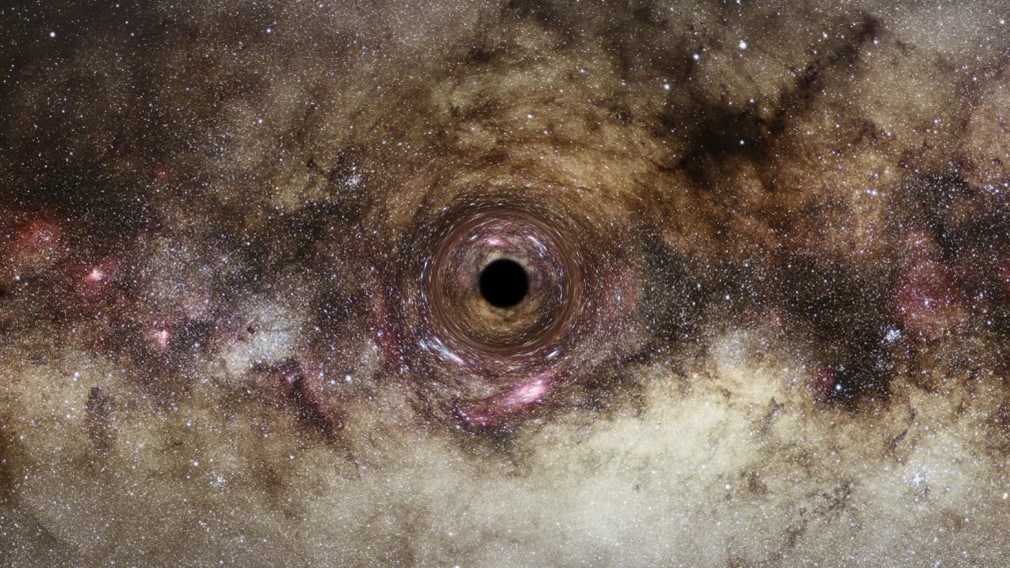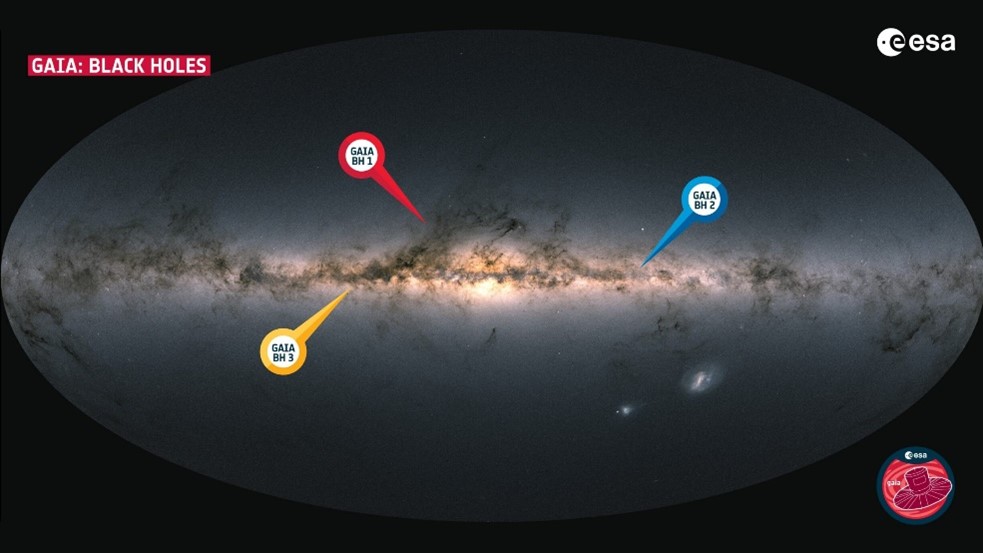HUN-REN CSFK researchers contribute to identifying a large black hole with a mass nearly 33 times that of the Sun
Wading through the wealth of data from ESA’s Gaia mission, scientists have uncovered a ‘sleeping giant’. A large black hole, with a mass nearly 33 times that of the Sun, was hiding in the constellation Aquila, less than 2000 light-years from Earth. This is the first time a black hole of stellar origin this big has been spotted within the Milky Way. So far, black holes of this type have only been observed in very distant galaxies. The discovery challenges our understanding of how massive stars develop and evolve. The results have been published in the journal Astronomy and Astrophysics by the Gaia Collaboration, which includes ten researchers from the Konkoly Thege Miklós Astronomical Institute of the HUN-REN Research Centre for Astronomy and Earth Sciences (HUN-REN CSFK).
Matter in a black hole is so densely packed that nothing can escape its immense gravitational pull, not even light. The great majority of stellar-mass black holes that we know of are gobbling up matter from a nearby star companion. The captured material falls onto the collapsed object at high speed, becoming extremely hot and releasing X-rays. These systems belong to a family of celestial objects named X-ray binaries. When a black hole does not have a companion close enough to steal matter from, it does not generate any light and is extremely difficult to spot. These black holes are called ‘dormant’.

A simulated image of a solitary black hole with the Milky Way in the background (Source: ESA/Hubble, DSS, Nick Risinger (skysurvey.org), N. Bartmann – CC BY 4.0)
To prepare for the release of the next Gaia catalogue, Data Release 4 (DR4), scientists are checking the motions of billions of stars and carrying out complex tests to see if anything is out of the ordinary. The motions of stars can be affected by companions: light ones, like exoplanets; heavier ones, like stars; or very heavy ones, like black holes. Dedicated teams are in place in the Gaia Collaboration to investigate any ‘odd’ cases.
One such team was deeply engaged in this work, when their attention fell on an old giant star in the constellation Aquila, at a distance of 1926 light-years from Earth. By analysing in detail the wobble in the star’s path, they found a big surprise. The star was locked in an orbital motion with a dormant black hole of exceptionally high mass, about 33 times that of the Sun. This is the third dormant black hole found with Gaia and was aptly named ‘Gaia BH3’.
This discovery is very exciting because of the mass of the object. The average mass of known black holes of stellar origin in our galaxy is around 10 times the mass of our Sun. Until now, the weight record was held by a black hole in an X-ray binary in the Cygnus constellation (Cyg X-1), whose mass is estimated to be around 20 times that of the Sun.
“This is the kind of discovery you make once in your research life,” exclaims Pasquale Panuzzo of CNRS, Observatoire de Paris, in France, who is the lead author of this finding. “So far, black holes this big have only ever been detected in distant galaxies by the LIGO–Virgo–KAGRA collaboration, thanks to observations of gravitational waves.”
“It is an interesting coincidence that the mass of the black hole discovered by Gaia is almost exactly the same as that of the components of the binary black hole first detected by the LIGO gravitational wave detector in 2015 ‒ only this one forms a binary system with an ordinary star. The new discovery confirms the idea that a surprisingly large number of black holes with a mass 20-40 times the Sun can exist within the Milky Way," HUN-REN CSFK Director-General László Kiss emphasised.
The exquisite quality of the Gaia data enabled scientists to pin down the mass of the black hole with unparalleled accuracy. However, astronomers now face the pressing question of explaining the origin of black holes as large as Gaia BH3. Most stellar evolutionary theories predict that, as they age, massive stars shed a sizable part of their material through powerful winds; ultimately, they are partly blown into space when they explode as supernovas. What remains of their core further contracts to become either a neutron star or a black hole, but ores large enough to end up as black holes of 30 times the mass of our Sun are very difficult to explain. Yet, a clue to this puzzle may lie very close to Gaia BH3.

The locations of the three black holes discovered by Gaia in the Milky Way (Source: ESA/Gaia/DPAC - CC BY-SA 3.0 IGO)
The star orbiting Gaia BH3 is rather uncommon: an ancient giant star, that formed in the first two billion years after the Big Bang, at the time our galaxy started to assemble. The companion star has very few elements heavier than hydrogen and helium, indicating that the massive star that became Gaia BH3 could also have been very poor in heavy elements. This is remarkable. It supports, for the first time, the theory that the high-mass black holes observed by gravitational wave experiments were produced by the collapse of primeval massive stars poor in heavy elements. These early stars might have evolved differently from the massive stars we currently see in our galaxy.
The discovery of the Gaia BH3 is only the beginning and this black hole and its companion will undoubtedly be the subject of many in-depth studies to come. The Gaia collaboration stumbled upon this ‘sleeping giant’ while checking the preliminary data in preparation for the fourth release of the Gaia catalogue. Because the finding is so exceptional, they decided to announce it ahead of the official release. The next release of Gaia data promises to be a goldmine for the study of binary systems and the discovery of more dormant black holes in our galaxy.
"Once again, the expectation that the range of results from Gaia's measurements is almost inexhaustible is confirmed. A discovery of this kind could not have been predicted. Moreover, the processing of Gaia's measurements hasn't even reached the halfway mark, so we can expect further breakthroughs in the years ahead," summarised by László Szabados, Professor Emeritus at HUN-REN CSFK, one of the Hungarian co-authors of the paper, and the initiator of the Hungarian Gaia participation.
Further information: esa.int

